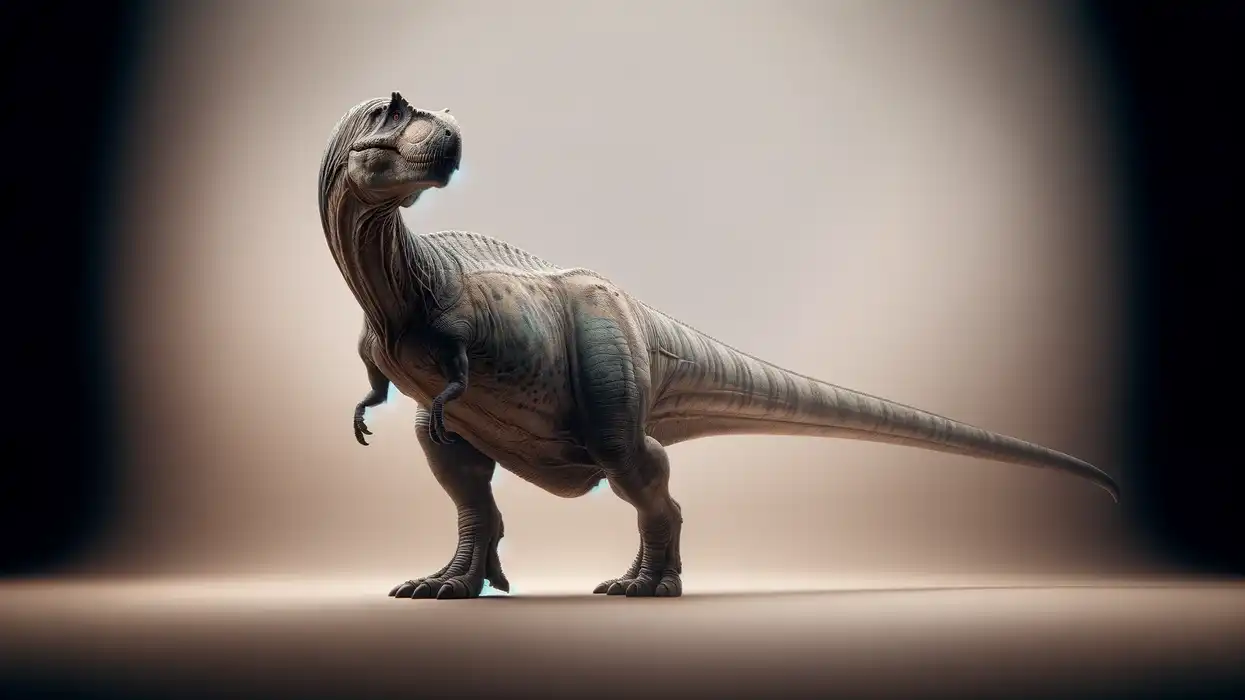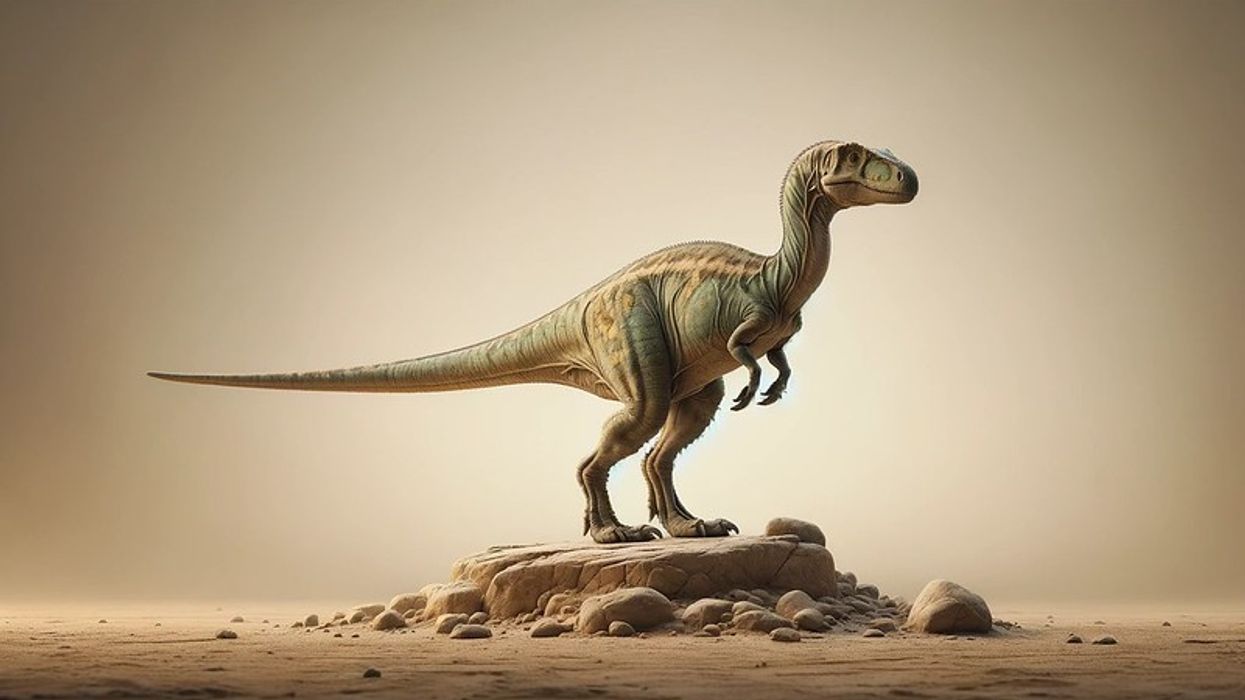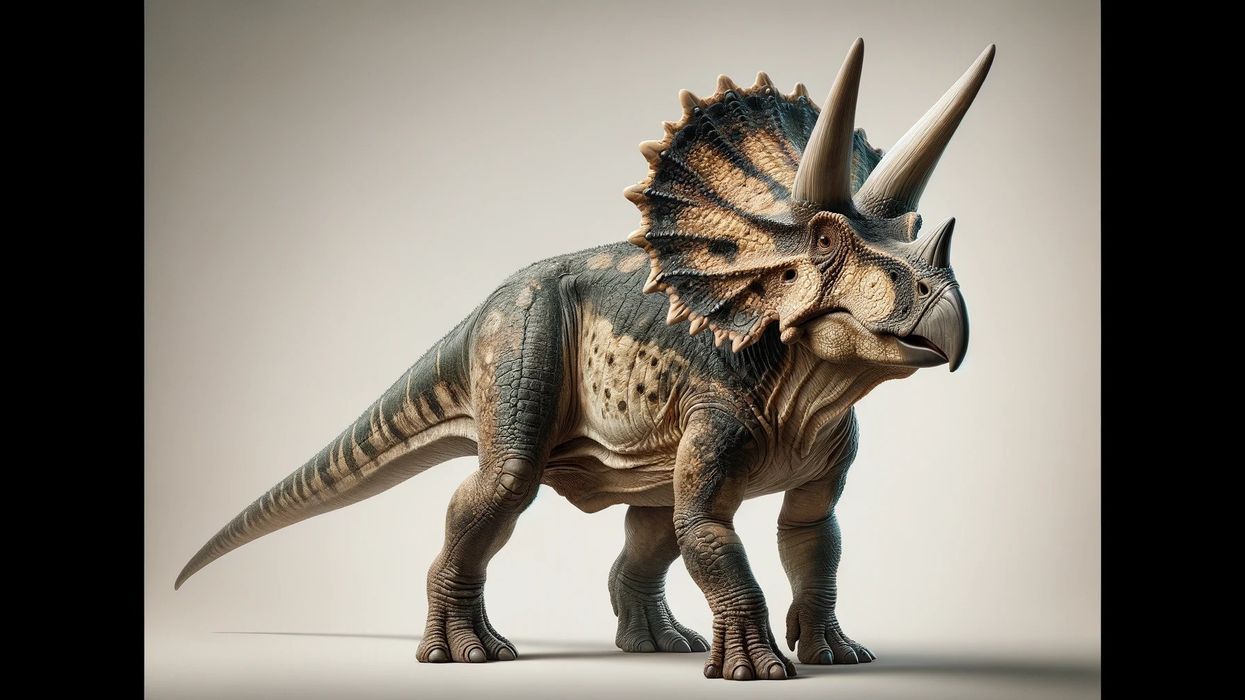The name Hoplitosaurus was given to a genus of armored dinosaurs. It is related to the genus Polacanthus.
Hoplitosaurus marshi is a type species of the genus and is ground-dwelling with a herbivorous diet. The meaning of the name Hoplitosaurus is hoplite lizard. The name was given after a partial skeleton was found in the Barremian age Lower Cretaceous Lakota Formation of Custer County, South Dakota.
This poorly known, armored dinosaur of the genus Hoplitosaurus is known to have lived 130 million years ago in the Hauterivian age of the Early Cretaceous. The partial skeleton found was first declared to be of the genus Stegosaurus, but it was later adjusted to the new genus Hoplitosaurus.
In the late 1980s early 1990s, scientists tried to push the species into the genus Polacanthus, however, in recent reviews, the species is accepted as a new valid albeit poorly known genus of dinosaurs. William T. Blows and Javier Pereda-Suberbiola, both found the genus to be closely related to Polacanthus (Ornithischia Ankylosauria).
They both created the species Polacanthus marshi, but this nomenclature was later rejected.
The name Ankylosaurs is a generic name given to a group of herbivorous dinosaur species of the order Ornithischia.
These dinosaurs were known to have emerged in the early Jurassic period and were present until the end of the Cretaceous period.
There have been many revelations in the United States National Museum Bulletin and New Mexico Museum of Natural History and Science Bulletin by CW Gilmore, Osteology in the United States National Museum of Natural History in 1914, and K. Carpenter and J.I.
Kirkland in 1998 (Review of Lower and middle Cretaceous ankylosaurs from North America) among other scientists.
For more relatable content, check out these Brontosaurus facts and Crichtonsaurus fun facts for kids.
Hoplitosaurus Interesting Facts
How do you pronounce 'Hoplitosaurus'?
The pronunciation of Hoplitosaurus is 'huh-plee-toh-saw-rus'.
What type of dinosaur was a Hoplitosaurus?
Hoplitosaurus is a genus of armored dinosaurs in the clade of Dinosauria in the kingdom of Animalia. It was earlier considered a new dinosaur Stegosaurus marshi of the genus Stegosaurus. However, the species was later put as Hoplitosaurus marshi.
In which geological period did the Hoplitosaurus roam the earth?
The species Hoplitosaurus was known to exist in the Barremian of the Cretaceous period.
It was considered similar to the genus Polacanthus (Ornithischia, Ankylosauria), an armored dinosaur genus found in the early cretaceous period of Europe and North America.
When did the Hoplitosaurus become extinct?
The species Hoplitosaurus was known to have gone extinct around 130 million years ago.
Where did a Hoplitosaurus live?
Hoplitosaurus marshi was known to live in present-day North America. Known locations of the species include South Dakota in the Lakota Formation. A partial skeleton (vertebrae, osteoderms, limb bones, and other fragments) was found in this region.
What was a Hoplitosaurus' habitat?
This was a terrestrial species found always on the ground.
Who did a Hoplitosaurus live with?
As the species has been long extinct, this information is not available. They probably lived in small groups like other herbivorous dinosaurs of that period. Dinosaurs have also been reenacted on the big screens of movies many a time.
How long did a Hoplitosaurus live?
The lifespan of the species has not been documented.
How did they reproduce?
The reproduction of the species Hoplitosaurus is not known, though we do know that it was an egg-laying species, similar to modern-day reptiles.
Hoplitosaurus Fun Facts
What did a Hoplitosaurus look like?
 We've been unable to source an image of a Hoplitosaurus and have used an image of a Stegosaurus instead. If you are able to provide us with a royalty-free image of a Hoplitosaurus, we would be happy to credit you. Please contact us at hello@kidadl.com.
We've been unable to source an image of a Hoplitosaurus and have used an image of a Stegosaurus instead. If you are able to provide us with a royalty-free image of a Hoplitosaurus, we would be happy to credit you. Please contact us at hello@kidadl.com.
The member of the genus Hoplitosaurus is similar to Polacanthus as they both have armors in the body. However, the Hoplitosaurus marshi lack the sacred shield of armor evidently found in the Polacanthus species.
To imagine the animal, as a polacanthid, the species would be a four-legged dinosaur having thick plates of bony armor. These plates of armor are called osteoderms or scutes present along the species' back. It is possible that Hoplitosaurus marshi had an extensive covering of spikes around its shoulders and along its flanks.
This is similar to other polacanthid genera. Due to the spikes and the body structure, the species probably fed on low-growing vegetation.
How many bones did a Hoplitosaurus have?
The number of bones present in these dinosaurs is not known. A fossil has been found but not for the whole body.
How did they communicate?
They probably communicated with each other by sound and touch. Information on this, however, is not available.
How big was a Hoplitosaurus?
According to the bone structure of the species, the dinosaurs grew up to a length of up to 13.9 ft (4.23 m).
How fast could a Hoplitosaurus move?
Judging by the body shape of the Hoplitosaurus dinosaur, the speed would have been on the lower side, However, information is not available on the running or the speed of this species, so proper details cannot be ascertained.
How much did a Hoplitosaurus weigh?
The weight is estimated to be up to 1477 lb (670 kg) for the extinct species.
What were the male and female names of the species?
Males and females are known by the same name. There are no sex=specific names given to this species.
What would you call a baby Hoplitosaurus?
There is no information available of the name of the baby of the Hoplitosaurus dinosaur.
What did they eat?
Much information is not available on the diet. Herbivore species like the Hoplitosaurus marshi had a diet that probably consisted of plants and herbs, leaves, grasses, and fruits and vegetables.
How aggressive were they?
Not much is known of this herbivorous species called Hoplitosaurus marshi. However, their armor was known to be their main defense.
Did you know...
The species with the name Hoplitosaurus marshi was also seen in the film, 'Jurassic World', but only as a hologram.
We need to know the history of the species. The species has been subject to many speculations making it a little confusing to the readers.
Much information on the genus is unavailable due to incomplete remains and fossils found. It was originally thought to be species of Stegosaurus, but in 1902, the findings on the partial postcranial remains probed that it belongs to a different genus called Hoplitosaurus.
The species name marshi was given to commemorate the famous American paleontologist Othniel Charles Marsh who also named the genus called Stegosaurus.
There are other armored dinosaurs called the Polacanthus, so there was a little debate if the Hoplitosaurus belongs to a different genus or if it's a part of the genus Polacanthus found in Western Europe. William T. Blows and Javier Pereda-Suberbiola considered Hoplitosaurus dinosaur to be part of Polacanthus, but this thesis was later rejected by other researchers.
The confusion was mostly because of the splate or spined plate present on both Polacanthus and Hoplitosaurus. The splate is a flat plate-like spine with a prominent spike in the middle.
The exact position of this splate is, however, known to be different in both the genera and this can be a way to differentiate between them. The full skeleton of the Hoplitosaurus dinosaur would give more welcome information as the details currently available is fairly limited and short.
It will also let us know the exact placement of the plate-like spine in the genus Hoplitosaurus.
For now, you can easily find several images of individual bones at the database of the National Museum of Natural History. Series of bones like ribs, caudal vertebrae, partial right scapula-coracoid, parts of both humeri, right femur, various ossicles, plates, and spines are currently available in the database according to Carpenter and Kirkland.
Was the Hoplitosaurus dinosaur renamed?
In 1901, Frederic Augustus Lucas believed that this species belongs to the genus Stegosaurus and that a new dinosaur Stegosaurus marshi was found. This was the generic name given. However, he later gave the species a new genus. In 1914, the material was fully discovered by Charles W. Gilmore.
What is the formation where Hoplitosaurus is found?
The partial skeleton of the species was found in the Barremian-age Lower Cretaceous Lakota Formation of Custer County, South Dakota.
Here at Kidadl, we have carefully created lots of interesting family-friendly dinosaur facts for everyone to discover! Learn more about some other creatures from our Brontosaurus facts, or Puertasaurus facts for kids.
You can even occupy yourself at home by coloring in one of our free printable Hoplitosaurus coloring pages.










